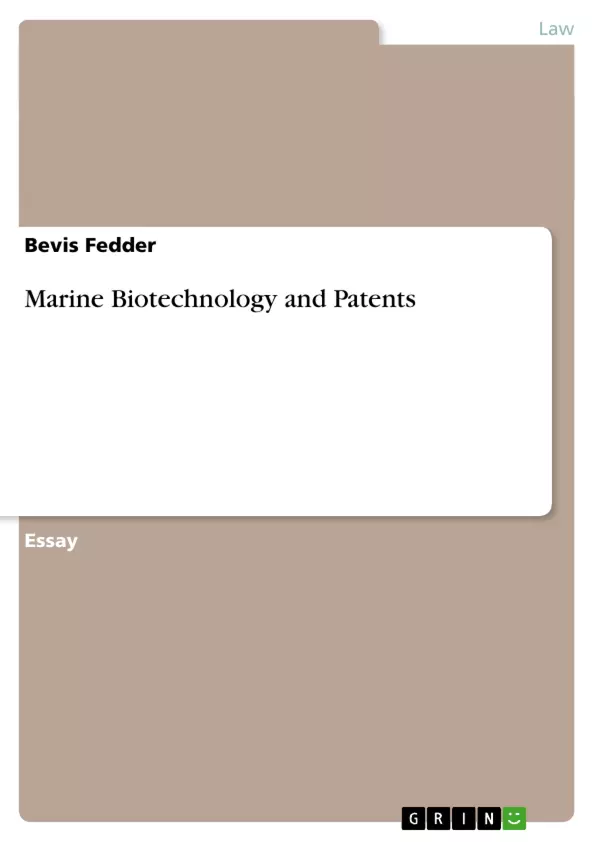Major industries relating to inventions in marine biotechnology increasingly apply for patents. Most
patents are applied for inventions that are derived from terrestrial biotechnology. However, it is
recognized that marine biotechnology offers a high potential to yield inventions as well. Marine
biotechnology can be divided into two main areas. First, development of commercially viable drugs
obtained from marine bioprospecting and, second, development of marine genetically modified
organisms for aquacultural and environmental purposes.
A patent means intellectual protection for an invention. Intellectual protection confers the exclusive
right upon the patent holder to sell the right of utilization of the invention to interested parties. The
selling of licenses provide one important way of receiving revenues for the research done for the
invention. The prospect of potential revenues provide the incentive for investment into biotechnological
research and subsequent patenting of inventions arising thereof.
The overall aim of this work is to illustrate the close interrelationship of science and law by using
marine biotechnology and patents as an example.
Section two provides an overview on the scientific side of marine biotechnology. It will define
marine biotechnology and investigate current advancements in marine biotechnology. Additionally, it
roughly explains the international patent system governing inventions in the biotechnological area and
provide examples on patents related to marine biotechnology.
Section three illustrates the criticism expressed against life form patents in marine as well as
terrestrial biotechnology. It will describe the most important cases that have fueled controversial
debates on life form patents until today.
[...]
Inhaltsverzeichnis (Table of Contents)
- Introduction
- Marine biotechnology
- Scientific background
- Patent background
- Patents on life forms
- General concerns
- Landmark cases
- Conclusions
Zielsetzung und Themenschwerpunkte (Objectives and Key Themes)
The objective of this work is to demonstrate the strong relationship between science and law using marine biotechnology and patents as a case study. It explores the scientific advancements in marine biotechnology, the patent system's application to these advancements, and the controversies surrounding patents on life forms.
- The scientific basis of marine biotechnology and its two main areas: drug development and genetically modified organisms.
- The international patent system and its application to biotechnological inventions.
- The critical perspectives and debates surrounding patents on life forms in marine and terrestrial biotechnology.
- The economic incentives driving investment in biotechnological research and patenting.
- Landmark cases that have shaped the discussion on life form patents.
Zusammenfassung der Kapitel (Chapter Summaries)
The Introduction establishes the context by highlighting the increasing application of patents in marine biotechnology, particularly focusing on drug development and genetically modified marine organisms. It emphasizes the incentive for research investment provided by patent-derived revenue.
The chapter on Marine Biotechnology provides a scientific overview, defining the field and discussing current advancements. It explains the technical fields of classical and modern biotechnology, and highlights the potential of marine resources for biotechnological applications, giving examples of bioactive compounds and genetically modified organisms developed from marine sources.
The section on Patents on Life Forms discusses the criticism surrounding patents on life forms, with a focus on major cases that have fueled these debates. This section sets the stage for examining the ethical and legal considerations of patenting biological materials derived from marine environments.
Schlüsselwörter (Keywords)
Marine biotechnology, patents, intellectual property rights, life form patents, genetically modified organisms, bioprospecting, drug development, bioremediation, landmark cases, TRIPS Agreement, economic incentives, scientific advancements, legal controversies.
- Citar trabajo
- M.Sc. Bevis Fedder (Autor), 2008, Marine Biotechnology and Patents, Múnich, GRIN Verlag, https://www.grin.com/document/120146



